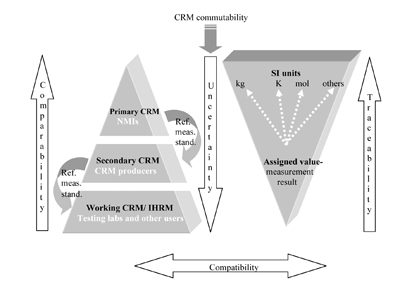Vol.
32 No. 4
July-August 2010
| Making an imPACt |
| |
Recent IUPAC technical reports and recommendations that affect the many fields of pure and applied chemistry.
See also www.iupac.org/publications/pac |
IUPAC/CITAC Guide: Selection and Use of Proficiency Testing Schemes for a Limited Number of Participants—Chemical Analytical Laboratories (IUPAC Technical Report)
Ilya Kuselman and Aleš Fajgelj
Pure and Applied Chemistry 2010
Vol. 82, No. 5, pp. 1099–1135
A metrological background for implementation of proficiency testing (PT) schemes for a limited number of participating laboratories (fewer than 30) is discussed in this paper. Such schemes should be based on the use of certified reference materials with traceable property values to serve as PT items whose composition is unknown to the participants. It is shown that achieving quality of PT results in the framework of the concept “tested once, accepted everywhere” requires both metrological comparability and compatibility of these results. The possibility of assessing collective/group performance of PT participants by comparison of the PT consensus value (mean or median of the PT results) with the certified value of the test items is analyzed. Tabulated criteria for this assessment are proposed. Practical examples are described for illustration of the issues discussed.
 |
A scheme of calibration hierarchy, traceability and commutability (adequacy or match) of RMs used for PT, comparability and compatibility of PT results; reproduced from ref. 16 by permission of Springer. |
http://dx.doi.org/10.1351/PAC-REP-09-08-15
Page
last modified 1 July 2010.
Copyright © 2003-2010 International Union of Pure and Applied Chemistry.
Questions regarding the website, please contact [email protected] |